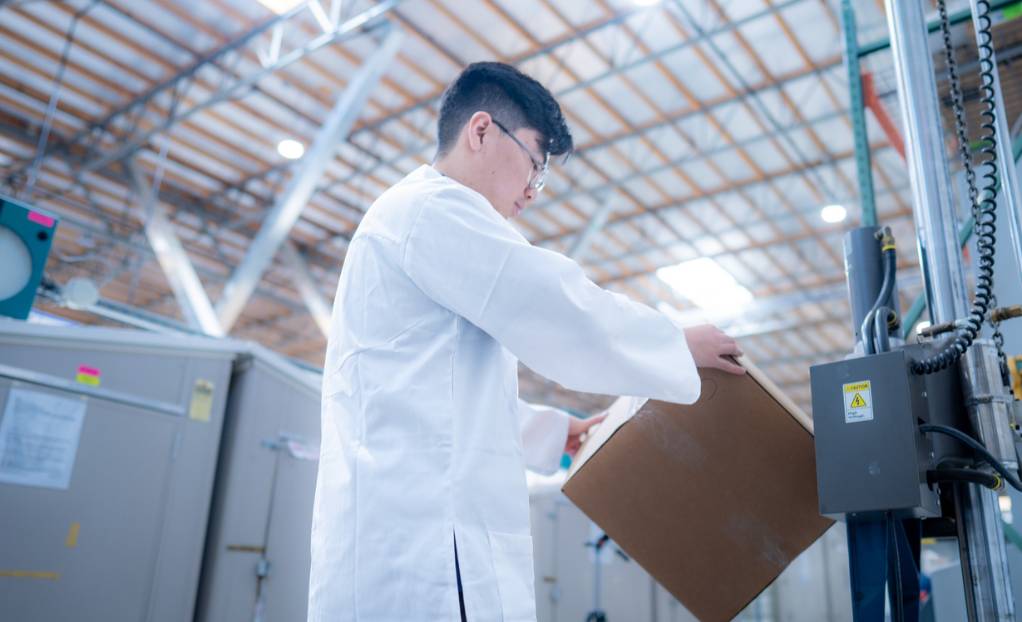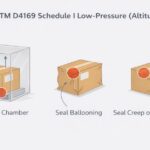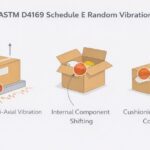What Are the Standard Tests for Evaluating Packaging During Transportation?
Ever had a package arrive looking like it lost a fight with a forklift? It’s funny—until you realize it’s your sterile medical device in that package. Whether it’s being tossed into a delivery van or navigating a bumpy cargo flight, your packaging has to take it all and keep your product safe.
In this post, we’ll walk through how transportation testing helps ensure that what starts sterile stays sterile—even when the road gets bumpy. Let’s dig in. Whether it’s bouncing around in a delivery truck or surviving a month at sea, it needs to hold up under pressure (literally and figuratively).
Medical device packaging doesn’t just need to pass sterility and shelf-life validation—it must also survive the rigors of distribution. Transportation testing is critical for proving that your packaging can protect devices from real-world hazards like vibration, drops, compression, and temperature fluctuations.
In this post, we’ll break down the standard tests used to evaluate packaging performance during transportation, and how they help ensure compliance with regulatory requirements and safeguard patient safety.
Why Transportation Testing Matters
Sure, it’s easy to assume your packaging will be fine. But delivery isn’t always a gentle process. Imagine your pristine, FDA-approved device getting squished under an office chair box or tossed into a puddle during a rainy dock unload. That’s why transportation testing matters.
Now for the serious part: devices often travel thousands of miles via trucks, planes, and ships. On the way, they’ll face:
Ever watched a delivery driver chuck a box across a truck? Your product might be next. That’s why testing isn’t just about ticking a box—it’s about making sure your device gets from A to B without turning into a jigsaw puzzle.
Medical devices may travel thousands of miles across multiple modes of transport—air, sea, truck—before reaching the end user. During that journey, packages are exposed to:
- Mechanical shocks (e.g., drops or rough handling)
- Compression (from stacking or shipping containers)
- Vibration (from road or air transport)
- Temperature and humidity swings (especially during long-haul distribution)
Transportation simulation testing replicates these stresses in a controlled environment to confirm the integrity and performance of the sterile barrier system (SBS).
Standardized Test Methods for Transportation Simulation
The following are the established, industry-recognized methods used to simulate and measure transportation risk. The following standards ensure packaging doesn’t just look good—it holds up under real-world conditions.
Several industry-recognized standards are used to validate medical device packaging against distribution hazards:
- ASTM D4169 – Standard Practice for Performance Testing of Shipping Containers and Systems
- This is one of the most widely used transportation test standards for medical devices.
- It simulates a range of distribution cycles, including different transportation modes, handling, and storage conditions.
- Includes drop tests, compression, vibration, and environmental conditioning.
- ISTA Series (International Safe Transit Association)
- ISTA 1A/1G/2A/3A protocols offer graduated levels of testing based on packaging type, size, and intended distribution path.
- ISTA 3A is often preferred for small parcel delivery systems, such as those used by FedEx and UPS.
- These tests are ideal for simulating real-world stresses for single and bulk-packaged products.
- ASTM D5276 – Drop Test for Loaded Containers
- Evaluates the ability of a package to withstand free-fall impacts.
- Drop heights are based on the package weight and expected handling conditions.
- ASTM D642 – Compression Resistance of Shipping Containers
- Measures the resistance to compressive forces, such as those that occur during stacking in a warehouse or shipping container.
- ASTM D999 – Vibration Testing of Shipping Containers
- Simulates the vibration profiles experienced during transport.
- Helps identify fatigue failures in packaging over time.
- ASTM D4332 – Conditioning Containers for Testing
- Provides guidance on pre-conditioning packaging to specified temperature and humidity levels before conducting mechanical tests.
- Ensures that test results reflect realistic environmental exposure.
How to Choose the Right Transportation Tests
By the time you’re selecting the right tests, it’s time to get focused. Your packaging must prove it can perform under very specific conditions. Here’s a quick scenario-based survey to help narrow it down:
Quick Quiz: What’s Your Shipping Scenario?
- What is the primary method of distribution?
- Individual parcel
- Palletized freight
- International sea freight
- What is the estimated transit time?
- Less than 3 days
- 3–14 days
- More than 14 days
- What environmental conditions will it be exposed to?
- Cold and dry
- Hot and humid
- Mixed or variable
- How is the product packaged?
- Single unit per carton
- Multiple units per carton
- Custom tray or rigid structure
- What is the approximate weight of the packaged product?
- Under 10 lbs
- 10–50 lbs
- Over 50 lbs
- Does your device require sterility?
- Yes
- No
What Tests Might You Need?
Based on your answers, here’s what we might recommend:
| Scenario | Real-World Example | Suggested Tests |
| Small parcel, sterile, lightweight | Box tossed into a van, then tossed again at your doorstep | ISTA 3A, ASTM D4169, ASTM D5276 (drop), ASTM D4332 (conditioning) |
| Pallet freight, medium weight, humid climate | Forklift slams pallet into truck, sits in hot warehouse | ASTM D4169, D642 (compression), D999 (vibration), D4332 |
| International boat ride | Rocking on the ocean + tropical temps | ASTM D4332 (conditioning), ASTM D4169, ISTA 2A |
| Cold chain | North Dakota blizzard or reefer truck | ASTM D4332 + temperature monitoring protocols |
Still unsure? No problem—contact LSO and we’ll help match your real-world shipping mayhem with the right mix of tests to keep your product safe and your customers happy. —we’ll help you validate your packaging with confidence. is often used to create a customized transportation simulation that reflects your actual shipping scenario.
How LSO Helps Validate Your Packaging
LSO supports medical device manufacturers by designing and executing transportation validation plans that align with the realities of distribution and regulatory expectations.
At LSO, we help medical device manufacturers design and execute transportation testing that ensures:
- Regulatory compliance with FDA, ISO 11607, and EU MDR standards
- Integrity of sterile barrier systems throughout distribution
- Packaging durability across multi-modal shipping environments
Our in-house testing capabilities include vibration, compression, drop, and environmental conditioning chambers—all performed under strict quality controls.
Conclusion
We started with jokes, but let’s end with a reality check. Your packaging is the unsung hero of your supply chain.
Your packaging doesn’t need to be bulletproof—but it does need to be delivery-proof. And with the right testing, it can be.
Transportation testing is essential to confirm that your medical device packaging can withstand distribution hazards and maintain sterility. By using standards like ASTM D4169, ISTA 3A, and ASTM D5276, manufacturers can reduce risk, ensure patient safety, and remain compliant with global regulations.
Need help determining which transportation tests are right for your packaging system? Contact LSO today—our experts are ready to support your validation strategy from concept to commercialization.





